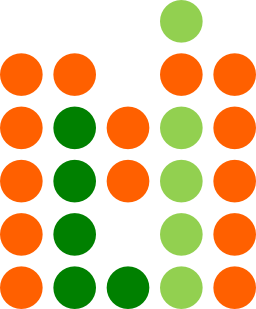 @ 2016-03-09 5:15 AM (#21220 - in reply to #21113) (#21220) Top
@ 2016-03-09 5:15 AM (#21220 - in reply to #21113) (#21220) Top
Posts: 1869








Country : India
debmohanty posted @ 2016-03-09 5:15 AM
Password removed and solutions appended.
Thanks Ivan for a great puzzle (and also for the neat write up). I'm not sure how you felt when we "rejected" this one from Marathon, but now I'm very glad we did that.
Thanks also to Branko for testing this.
Thanks Ivan for a great puzzle (and also for the neat write up). I'm not sure how you felt when we "rejected" this one from Marathon, but now I'm very glad we did that.
Thanks also to Branko for testing this.
 @ 2016-03-09 5:17 AM (#21221 - in reply to #21215) (#21221) Top
@ 2016-03-09 5:17 AM (#21221 - in reply to #21215) (#21221) Top
Posts: 1869








Country : India
debmohanty posted @ 2016-03-09 5:17 AM
prasanna16391 - 2016-03-08 2:12 PM
I'm really surprised by my position in this contest.
Congratulations for double-podium-weekend.I'm really surprised by my position in this contest.
 @ 2016-03-10 6:40 AM (#21227 - in reply to #21113) (#21227) Top
@ 2016-03-10 6:40 AM (#21227 - in reply to #21113) (#21227) TopPosts: 3
Country : United States
aclayton posted @ 2016-03-10 6:40 AM
Spent a rainy weekend periodically fiddling with this puzzle, trying to find a break in.. I marked the 2x2 region divisions, found and marked with various colors the 4- and 3-chains, but eventually put it on hold until the end of the contest, figuring I'd find the hint I needed from the thread comments. I think I would have eventually realized what each 2x2 quartet belonging to a single leg of the number map implies for categorizing and placing the quartets, but my thought process never really came near the direction required to realize the parity break-in.
However, getting stumped was not discouraging at all, I knew from looking at the puzzle (and from Ivan's past puzzles) that it would eventually be enjoyable, and I patiently waited out the contest duration. Sure enough, by about bullet 3 or 4 of Ivan's great break-in explanation, I was off to the races. And was happy to find that all the cell-coloring work I had done earlier was not wasted, and very useful during the solve process. As expected, an extremely fun solve after getting over that first hurdle. Thank you Ivan!
However, getting stumped was not discouraging at all, I knew from looking at the puzzle (and from Ivan's past puzzles) that it would eventually be enjoyable, and I patiently waited out the contest duration. Sure enough, by about bullet 3 or 4 of Ivan's great break-in explanation, I was off to the races. And was happy to find that all the cell-coloring work I had done earlier was not wasted, and very useful during the solve process. As expected, an extremely fun solve after getting over that first hurdle. Thank you Ivan!
 @ 2016-03-11 12:24 AM (#21230 - in reply to #21211) (#21230) Top
@ 2016-03-11 12:24 AM (#21230 - in reply to #21211) (#21230) TopPosts: 3
Country : Canada
romanm44 posted @ 2016-03-11 12:24 AM
I believe there is a somewhat simpler way to determine that the L-blocks must all contain only odd numbers.
If one looks at any row (or column) of 2x2 blocks, there are 6 blocks each containing 4 values and 2 L-blocks each containing 3 values (when the 10s are excluded). In these blocks we need to place 10 odds, 8 evens and 12 tens with the restriction that each block can only contain values of the same type. The only way the odds can be accommodated is by using one 4-block and both L-blocks. The remaining groups fit comfortably in 2 and 3 4-blocks respectively.
I still can't understand how anyone can solve this puzzle in 41 minutes! :)
If one looks at any row (or column) of 2x2 blocks, there are 6 blocks each containing 4 values and 2 L-blocks each containing 3 values (when the 10s are excluded). In these blocks we need to place 10 odds, 8 evens and 12 tens with the restriction that each block can only contain values of the same type. The only way the odds can be accommodated is by using one 4-block and both L-blocks. The remaining groups fit comfortably in 2 and 3 4-blocks respectively.
I still can't understand how anyone can solve this puzzle in 41 minutes! :)